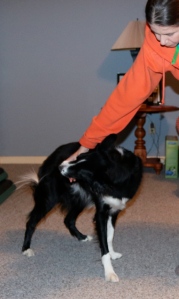SirPrize recently passed his Novice and Intermediate Trick Dog Tests, and although I didn’t train these tricks specifically for these tests it got me thinking, many of the tricks he knows are because of the fitness training we do!

Often times people who train with me will ask, ” Why do you want to know if “Rex” can nose touch or shake a paw?”
Simply because we can USE these tricks in our conditioning training! With a trick such as the nose touch, you can get your dog to shift his weight on his own without having to do it manually by applying pressure to his body. The same unassisted weight shifting also occurs when we ask the dog to perform “shake/paw” trick while on balance equipment. Not only that, but it gets your dog thinking more and a thinking dog is getting the added benefit of getting a mental workout and not just a physical one. In addition, the bond that comes with this training time grows stronger between the handler and the dog. Put all of this together and you get a happy, mentally stimulated, pooped pooch!
Along with these two tricks, you can increase the difficulty in the weight shifting exercise by teaching your dog to “wave” or “high five”. The added independent motion of the dog having to balance himself with greater instability will make this once-simple core exercise more advanced. Want to add more motion? Find your dog’s favorite ball or toy and teach them how to catch it. Catching is a skill in itself, but add it to a balance prop and the benefits are compounded. (Keep in mind this is an advanced skill. Your dog has to be strong enough to find his balance and hold it with the other ‘tricks’ before adding this to your routine.)
Can your dog turn a circle right and left on the flat? Doing it on a piece of balance equipment makes this an advanced exercise too. It takes core strength, body awareness and control.
The list of tricks that can be used in some form or another goes on and on! Some can be used as part of a warm up routine, some can be used as an exercise in itself, and others make an exercise more advanced. Here are some additional examples:
- Crawl
- Leg weave
- Rollover
- Sit Pretty
- Paws Up
- Target
- Back up
- Jump
So while trick training to some may just be cute or a fun bonding experience with your dog I say, use what you’ve trained (or train some new tricks) and apply them to your fitness training routine to keep it interesting for you and your dog.




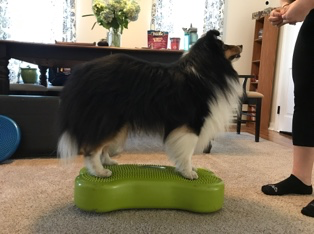 Among other things, I had Meg ask Bolt to look right and left and watch her as she walked a circle around him. These variations caused him to shift his weight in all directions while working the small stabilizer muscles in his core.
Among other things, I had Meg ask Bolt to look right and left and watch her as she walked a circle around him. These variations caused him to shift his weight in all directions while working the small stabilizer muscles in his core.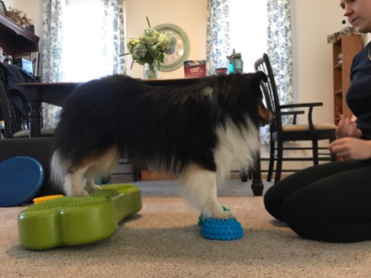
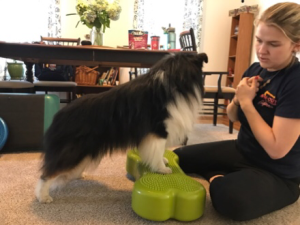 Many exercises will work more than one part of the body but often they will have a primary focus.
Many exercises will work more than one part of the body but often they will have a primary focus.

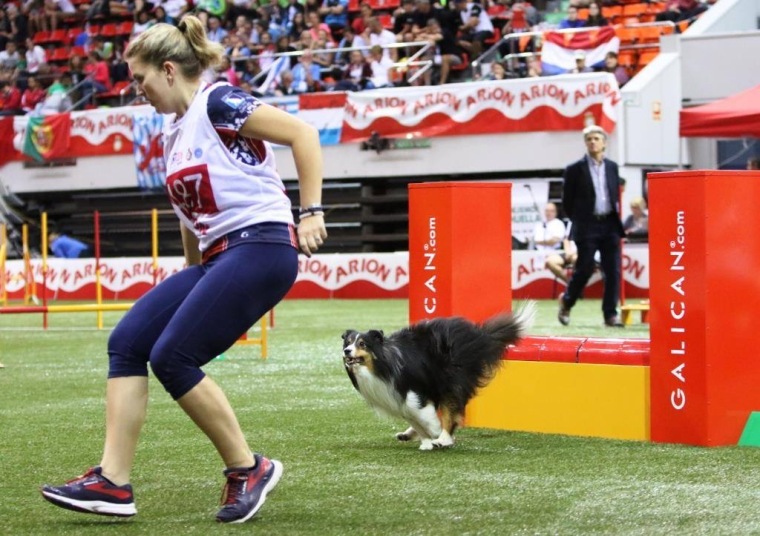

 vet visits, x-rays, visits to specialists, dozens of phone calls, second (or more) opinions, chiropractic visits, before finally…clearance from the veterinarians and specialists to begin the slow return to activity. Even then Meg built up slowly- short walks, gentle stretching, slowly raising agility bars back to full height, more chiropractic adjustments, and yes, conditioning – all while remembering to breathe while doing it.
vet visits, x-rays, visits to specialists, dozens of phone calls, second (or more) opinions, chiropractic visits, before finally…clearance from the veterinarians and specialists to begin the slow return to activity. Even then Meg built up slowly- short walks, gentle stretching, slowly raising agility bars back to full height, more chiropractic adjustments, and yes, conditioning – all while remembering to breathe while doing it.